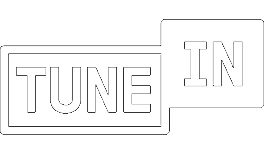Podcast Transcript
Hi, I am Tamika Riley from Kingdom Business where we help connect the dots so you can get to your promise. What we’re going to discuss is how to pay off your mortgage in five to seven years. Is it possible? A 30-year mortgage? Well, let’s talk about it.
We’re going to be examining how to pay off your mortgage five to seven years. It’s not anything shady. It’s not anything illegal. People have been doing it for ages, but that information has not made it to certain communities, so I would like to examine that with you and hopefully give you some information that will help lighten your load, so to speak.
What we’re going to be examining is a phenomenon, well it’s not really a phenomenon. It’s something that people have been doing for ages, but unfortunately, that information has not made it out to certain communities, and I want to bring that information before you. It is a strategy, so to speak, called Velocity Banking, and I invite you to do your research about this.
With velocity banking what you’re doing is taking a revolving line of credit and you’re using it to pay off your mortgage, basically.
Now, what is a revolving line of credit? Let’s say you have a loan for a thousand dollars versus a line of credit for a thousand dollars. With a revolving line of credit, once you make a payment that money becomes available for you to use again, it revolves so to speak. If you just have a regular loan for a thousand dollars, you make a $500 payment against that loan. You now owe another $500. That $500 does not become available to use again. You can only use it once.
So a revolving line of credit is what you’re using, and you can do that in a number of ways. We’re going to be looking at two: HELOCs and credit cards. I prefer, HELOCs, I don’t have a credit card. I don’t want a credit card. I’ve stayed away from credit cards, but you’re welcome to use that if you’ve got a great interest rate.
But what is a HELOC? It stands for home equity line of credit. And what it does is it allows you to take a loan against your equity in your home. You take that loan and it is a revolving line of credit—once you make payments, that amount is available for you to use again. Banks differ in their terms, but interest rates are around 3%. It does not compound like your mortgage does, so you don’t have that high amount going towards interest like you do with your mortgage. Unfortunately when you’re scoffing at people that are using rent-to-own places, you’re doing the same thing with your home, with a mortgage you’re paying for it more than once before it becomes yours.
Look at your mortgage statement. I’m going to be using some round numbers as examples. Let’s say you have a $200,000 home. You owe $160,000. You have $40,000 in equity. Your credit is good enough, you’re in the mid-600s. You go to a bank, you get a HELOC- a home equity line of credit. You don’t have to use the whole $40,000 in equity. Use your discretion—don’t use it to go on a shopping spree and live your best life. Don’t go flying in a jet.
Take that HELOC, allow it to sit in your account and you use it for your daily expenses. When you get paid every month from your employment, your business, or wherever your income comes from—let’s say you bring in $5,000 a month (just to make the math a little easier) and you owe $160,000 on your house then your mortgage payment on something like that is maybe $1,200 a month. Instead of just paying your mortgage payment like you’ve been doing, before your mortgage is due, take your entire month’s salary and put it towards your principal only. You contact the bank and let them know though, otherwise they’ll take most of it in interest. Let them know you want this money to go towards principal only—your entire month’s salary.
For the rest of the month, your other needs are met by your HELOC. You make your water bill, your electric bill payments, you make your car note payment, all of that from your HELOC. You can use your debit card, your checkbook, just like you always have. And you live on your HELOC. You buy your groceries, whatever you need to do that way.
Banks differ in their terms. So some banks give you 30 years to pay it back, some 15, some maybe even 10—it just depends on the bank. Do your research and find out which one works best for you. Again, interest rates are around 3%. Your payment is going to be extremely low, so you make your monthly payment on your HELOC. Make sure you make it on time. The following month rolls around, you take your monthly salary, and you do the exact same thing again—you put your entire salary towards principal only (make sure the bank knows this is for principal only) so that all of that money is coming directly off of your mortgage principal and it’s not going towards interest.
Once you’re done and you’ve made several interest payments, you can see the balance dropping dramatically. I’m going to give you some examples. Let’s say, you have $160,000 left on your mortgage. If you’re paying $5,000 a month towards your principal, then in 32 months, you will have paid your mortgage off. That’s two and a half years! I’m saying five to seven years to be generous, and I’m also saying five to seven years because your numbers are going to differ. Your numbers are going to be different because some of you make more money, some of you make less. Some of your mortgages are higher and some of them are lower.
But this is to give you an example so that you can understand the strategy that many are using in Velocity Banking, that’s what it’s called. Paying $5,000 towards your principal only, before the note is due and you’ve paid off your $160,000 home in two and a half years. Do the math. I’m not making it up. Do the math.
And what do you do when you have a need? You have a HELOC sitting in your account. You need some groceries, go get them, write a check, swipe your card, go get some cash. Whatever you want to do, that money is sitting there for your monthly expenses. You do have to make your monthly payment on your HELOC, but your monthly payment is going to be low compared to what it would be on your mortgage. Don’t go and do any extravagant shopping or spending, home improvements, or any of that. Just focus on getting rid of your mortgage.
Once you’re done with your mortgage, if you have a student loan, you can do the same thing with your student loan. You can do the same thing with your car note, if you have a car note. But make sure that you attack your debts and get out of debt as soon as possible, as quickly as possible, as comfortably as possible because you have this nest egg sitting in your account, called a HELOC.
You can also do the same thing with your credit cards. I shy away from credit cards because the interest rates nowadays are terrible. And the interest rates on a HELOC again around 3 percent, it depends on the bank, some of them are a little more and you have so long to pay it back. But make sure you make your monthly minimum payment, which is probably going to be less than a hundred dollars, so keep that back. Don’t send that to the mortgage company when you’re making your lump sum payments.
But that’s a strategy to get out of debt faster and that strategy is called Velocity Banking. A lot of people are using it.
There’s another strategy that a lot of people are also using where they’re being their own banks—and that is called Infinite Banking.
So we touched on Velocity Banking, but in regards to Infinite Banking, you’re basically your own bank. Instead of going to a financial institution, you’re maybe pulling from your 401k, some have whole life insurance policies that they can borrow against. That’s another option as well. But that’s what the Infinite Banking is, to where you don’t need an outside bank. You’re basically your own bank. Once this process is finished, you can even do the same thing with your utilities—pay those up for a few years.
But what we wanted to examine was getting you out of debt, paying off that mortgage in five to seven years. And as you can see what I’ve laid out before you are realistic numbers, realistic terms. And if you do the math, you’ve paid off $160,000 in only two and a half years. So now you can turn around and you can do the same thing with your mortgage. You can do the same thing with your vehicle, and any other major bills that you have that have been weighing you down every month.
Once you’re done and you’re satisfied, you then begin to attack your HELOC the same way. You take your monthly salary, and you throw the entire thing at that debt. You pull a few hundred dollars out a month and make sure your utilities and groceries are covered, but you throw your entire salary at paying off that debt as well.
And then before you know it, you’re living debt free! The first of the month comes around and there are no heart palpitations. You’re not dodging phone calls. You boldly answer an 800-number, and you don’t even know who it is. It’s possible! It is possible!
The Bible says that the borrower is subject to the lender. Some translations even say the borrower is slave to the lender. And when you think about it, it’s true because you’re working all these hours, putting in all this time and the money is going to somebody else. Somebody else is benefiting.
If you’re not a homeowner, I encourage you to look into getting your credit or to getting your numbers to the place, to where you can buy a home, because it doesn’t have to be a 30-year sentence anymore. And when you think about it, if you’re renting, you are paying a mortgage, it’s just not your own. So it is possible.
We will have some resources on the website that will show you how to get out of debt. It will show you not only how to get out of debt, but it will show you how to clean up your own credit report. If you can’t afford to pay someone to do it, you can do it yourself.
In our next episode, we’re going to be talking about your credit. We’re going to be talking about ways that your credit has been violated and you didn’t even know it. Your rights had been violated and you didn’t even know it. Things that you can do to clean up your credit, things that you can do on your own without relying on services that charge you by the month, to lock your credit report. You can pay a one-time $5 fee to the credit bureaus and lock it yourself. And nobody can get in it. Not even you. Even if it’s legitimately you, if they don’t have this code, or if you don’t do a lift and lift that credit freeze, nobody’s getting your credit report. So you don’t have to worry about having anybody monitoring anything because it’s locked out. You’re even locked out, and so you have to call and get a code. There are things that you can do on your own. And we’ll be talking about that next.
About The Author

Tameka Riley
Tameka Riley is the founder of Kingdom Business, a production company that serves people of God in various capacities. She has authored several books, developed and runs IPTV channels on Roku, FireTV and Android TV. She is also the host of Video Vineyard, a gospel music television program currently broadcasting to millions of homes on KBBN and the NOW Network.







